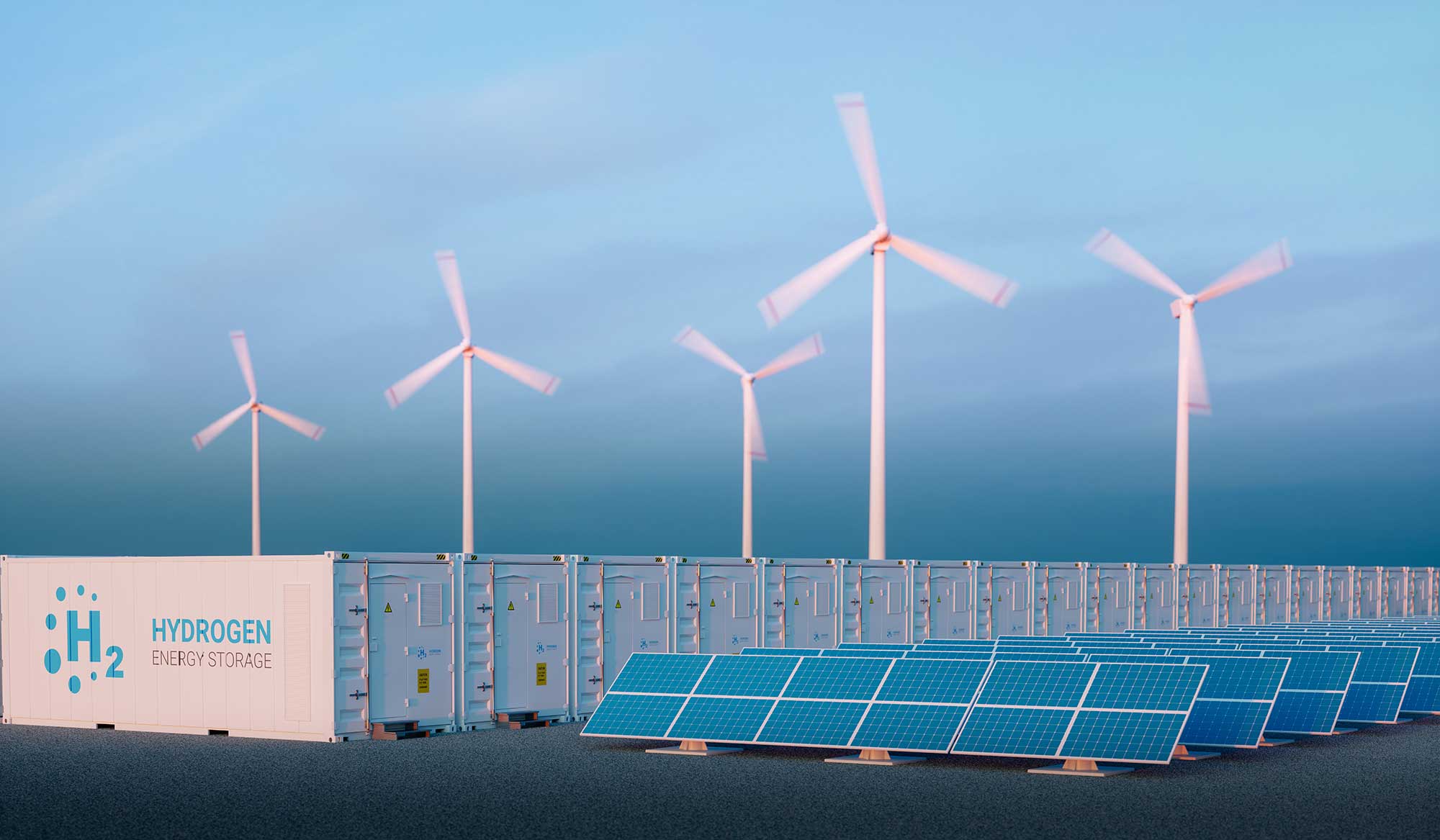RWE contributes broad expertise in the field of sustainable energy and hydrogen production. “We are the second largest operator of offshore wind farms in the world and have experience in the field of electrolysers, making us the ideal partner for NortH2,” said Roger Miesen, CEO of RWE Generation.
The NortH2 partners want to jointly build a system of offshore wind farms, electrolysers, gas storage and developing pipelines to supply green hydrogen to industrial clusters in northwestern Europe. The goal is to have a production capacity of 4 gigawatts (GW) by 2030. NortH2 can thus play an important role in achieving the EU target to install at least 40 GW of hydrogen electrolysers throughout Europe.
Growing capacity
By 2040, NortH2’s capacity is expected to grow to more than 10 gigawatts – enough to produce 1 million tons of green hydrogen per year. This leads to a reduction of 8 to 10 million tons of CO2 per year.
Together with the NortH2 partners, RWE will continue to work on completing one until 2021 feasibility study. With positive results, the first development activities in the start in the second half of 2021. “A project such as NortH2, which produces green hydrogen to decarbonise industry, can contribute to achieving the Dutch and European climate targets for 2030 and to the implementation of the Paris Agreement,” said Roger Miesen.
Entire value chain
With RWE, the NortH2 consortium has gained a partner that is active throughout the green hydrogen value chain: RWE Renewables – the world’s number two in offshore wind energy – can provide clean electricity for the production of hydrogen. RWE Generation has the knowledge to produce green hydrogen. RWE Gas Storage can store hydrogen in its gas storage facilities and the energy trading company RWE Supply & Trading can supply the fuel to industrial customers.
30 Hydrogen projects
RWE is already working on some thirty hydrogen projects in the Netherlands, Germany and the United Kingdom. In the Netherlands these are Eemshydrogen and FUREC. Eemshydrogen wants to develop a 50 MW electrolyser in Eemshoven, which will help the local chemical industry decarbonise processes. FUREC deals with the production of hydrogen from waste streams in the Limburg region.
GET H2 is the largest hydrogen project in Germany. Its aim is to realize the first freely accessible hydrogen network in the country, with scalable industrial production of green hydrogen. Under the name GET H2, RWE plans to build the largest electrolyser in Germany in Lingen, with a capacity of 100 MW. The electrolysis capacity in Lingen can be expanded by 2 GW.
RWE is also a partner in the AquaVentus project off the coast of Heligoland in the German North Sea. AquaVentus wants to produce hydrogen using offshore wind energy, with the island of Heligoland serving as a central hub.
In the United Kingdom, RWE is working with partners in industrial clusters to investigate how the existing hydrogen infrastructure can be used.
Image: petrmalinak/Shutterstock



